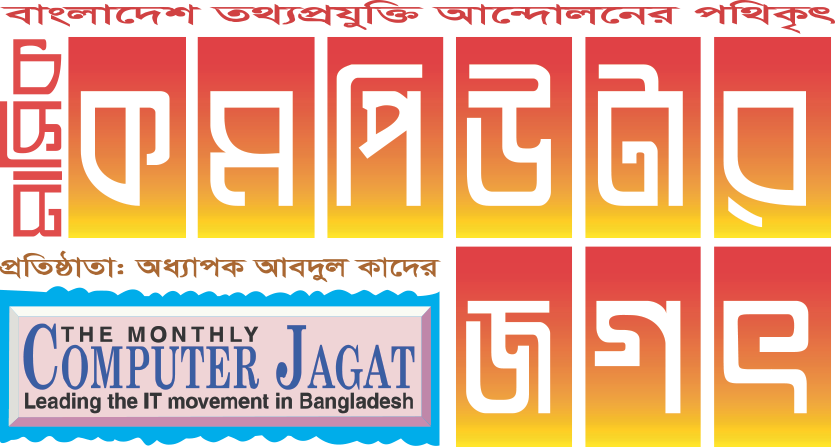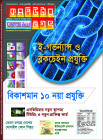হোম > NSDI Establishment for Digital Bangladesh
লেখক পরিচিতি
লেখকের নাম:
তানভীর মাহমুদ
মোট লেখা:১৬
লেখা সম্পর্কিত
পাবলিশ:
২০১৮ - নভেম্বর
তথ্যসূত্র:
কমপিউটার জগৎ
লেখার ধরণ:
ডাটা একসেস
তথ্যসূত্র:
ইংরেজি সেকশন
ভাষা:
বাংলা
স্বত্ত্ব:
কমপিউটার জগৎ
NSDI Establishment for Digital Bangladesh
NSDI Establishment for Digital Bangladesh
Tanimul Bari
What is SDI?
As per Wikipedia definition - A spatial data infrastructure (SDI) is a data infrastructure implementing a framework of geographic data, metadata, users and tools that are interactively connected in order to use spatial data in an efficient and flexible way. Another definition is “the technology, policies, standards, human resources, and related activities necessary to acquire, process, distribute, use, maintain, and preserve spatial data”.
Spatial data come from many sources and is used within many domains. An efficient use of government resources requires that spatial data is stored, made available and maintained at the most appropriate level and that it is possible to combine spatial data from different sources and share them between several users and applications The ”ecosystem” that facilitates this, is called a spatial data infrastructure. Global Spatial Data Infrastructure Association (GSDI) defines spatial data infrastructure (SDI) as:
“the technology, policies, standards, and human resources necessary to acquire, process, store, distribute, and improve utilization of geospatial data” GSDI Cookbook.
What is NSDI?
Spatial Data Infrastructure (SDI) has emerged as a valuable tool for monitoring development outcomes. A National Spatial Data Infrastructure (NSDI) is a legal and technical framework for sharing geographic data between stakeholders. This requires the establishment of standards for the delivery of data, a portal for accessing the data and cooperation between data producers and data consumers. NSDI requires governments to:
* Designate appropriate structures and mechanisms for coordinating the contributions of all those with an interest in NSDI.
* Actively form a national policy for data sharing within the nation, and develop practical tools for this goal (e.g. national geoportal)
* Monitor and report annually on the progress of the implementation to government, civil society, etc.
INSPIRE directive for NSDI
INfrastructure for SPatial Information (INSPIRE) is Directive 2007/2/EC of the European Parliament and the EU Council from March 14, 2007, regarding spatial data and supporting the creation of policy relating to the environment. The INSPIRE Directive entered into force on May 15, 2007.INSPIRE constitutes a future framework for NSDI’s within EU Member States. INSPIRE is a legal framework for developing SDI throughout the EU in order to facilitate interoperability, that is, the improvement and sharing of information across various levels of government. INSPIRE is based on following principles -
* Data should be collected only once and kept where it can be maintained most effectively.
* Seamless spatial information from different sources across Europe should be combined and shared with many users and applications.
* Information collected at one level/scale should be shared with all levels/scales—detailed for thorough investigations, general for strategic purposes.
* Geographic information needed for good governance at all levels should be readily and transparently available.
* Geographic information should be easily available, as should tips on how it can meet a particular need and under which conditions it can be acquired and used.
WHY NSDI?
Multiple kinds of spatial data provided by different organizations are used simultaneously and joined as layers in various user applications. Making this information widely accessible enables many industries and public agencies to add value and reduce costs. A national SDI (NSDI, and for EU candidate and member states, INSPIRE) is a foundation for producing, sharing , and consuming geospatial information, thus improving decision making and service delivery across many sectors.
* Reducing redundancy in geospatial data creation and maintenance
* Reducing the costs of geospatial data creation and maintenance
* Improving access to geospatial data
* Improving the accuracy of geospatial data used by the broader community
Bangladesh SDIs
Although many organizations in Bangladesh are working with GIS data for years, but there was hardly any SDI just 2-3 years ago. World Bank has contributed a lot to establish GeoDASH platform (geodash.gov.bd) which can be treated as a complete SDI. GeoDASH stands for Geospatial Open Data Sharing Platform. It is based on the free and open source software GeoNode. It is a web based application and platform for collating, storing, and sharing geospatial data and for deploying spatial data infrastructures (SDIs).In December 2015 World Bank transferred the ownership of Geospatial Data Sharing Platform (GEODASH) to the Bangladesh Computer Council (BCC), Government of Bangladesh (GoB). Its now hosted at BCC’s datacenter which web url GeoDASH.gov.bd
Figure 2: GeoDASH platform
GEODASH provides integrated data storage, data retrieval capabilities, viewing, and mapping capabilities. It is scalable to include various types of spatial information, ranging from physical geographic data, to natural hazards, socio demography, and others.
Some of the highlighted features are
Bangladesh NSDI
Bangladesh has progressed a great extent towards establishing NSDI platform. Survey of Bangladesh (SOB),with support from JICA, is implementing it for Digital Bangladesh. Bangladesh Computer Council (BCC) is helping SOB in this regard.
Bangladesh NSDI platform (nsdi.gov.bd) is based on GeoDASH platform actually. Necessary customizations/ modifications (on GeODASH platform) are being implemented for pilot launching of the NSDI portal. There was a MoU signed between SOB and BCC in this regard. A limited number of organizations are involved for the piloting of the NSDI portal. Once the piloting is complete, it’s outcome will be exposed in some national conference. And based on the feedback from piloting further modification/change will be incorporated for go live phase. Salient features of Bangladesh NSDIis as follows -
* Unified projection system
* Provision to setup custom base map
* Data management module
* Administration and user categories
* Access control
* Web mapping service
* Cross layer buffer search
* Analytics
* Data Security
* Scalable platform to handle large data
Conclusion
We hope that SOB will continue to use GeoDASH portal as the base of NSDI platform. INSPIRE Directives can be adhered for NSDI Bangladesh for better user experience and to make it world class
Tanimul Bari
What is SDI?
As per Wikipedia definition - A spatial data infrastructure (SDI) is a data infrastructure implementing a framework of geographic data, metadata, users and tools that are interactively connected in order to use spatial data in an efficient and flexible way. Another definition is “the technology, policies, standards, human resources, and related activities necessary to acquire, process, distribute, use, maintain, and preserve spatial data”.
Spatial data come from many sources and is used within many domains. An efficient use of government resources requires that spatial data is stored, made available and maintained at the most appropriate level and that it is possible to combine spatial data from different sources and share them between several users and applications The ”ecosystem” that facilitates this, is called a spatial data infrastructure. Global Spatial Data Infrastructure Association (GSDI) defines spatial data infrastructure (SDI) as:
“the technology, policies, standards, and human resources necessary to acquire, process, store, distribute, and improve utilization of geospatial data” GSDI Cookbook.
What is NSDI?
Spatial Data Infrastructure (SDI) has emerged as a valuable tool for monitoring development outcomes. A National Spatial Data Infrastructure (NSDI) is a legal and technical framework for sharing geographic data between stakeholders. This requires the establishment of standards for the delivery of data, a portal for accessing the data and cooperation between data producers and data consumers. NSDI requires governments to:
* Designate appropriate structures and mechanisms for coordinating the contributions of all those with an interest in NSDI.
* Actively form a national policy for data sharing within the nation, and develop practical tools for this goal (e.g. national geoportal)
* Monitor and report annually on the progress of the implementation to government, civil society, etc.
INSPIRE directive for NSDI
INfrastructure for SPatial Information (INSPIRE) is Directive 2007/2/EC of the European Parliament and the EU Council from March 14, 2007, regarding spatial data and supporting the creation of policy relating to the environment. The INSPIRE Directive entered into force on May 15, 2007.INSPIRE constitutes a future framework for NSDI’s within EU Member States. INSPIRE is a legal framework for developing SDI throughout the EU in order to facilitate interoperability, that is, the improvement and sharing of information across various levels of government. INSPIRE is based on following principles -
* Data should be collected only once and kept where it can be maintained most effectively.
* Seamless spatial information from different sources across Europe should be combined and shared with many users and applications.
* Information collected at one level/scale should be shared with all levels/scales—detailed for thorough investigations, general for strategic purposes.
* Geographic information needed for good governance at all levels should be readily and transparently available.
* Geographic information should be easily available, as should tips on how it can meet a particular need and under which conditions it can be acquired and used.
WHY NSDI?
Multiple kinds of spatial data provided by different organizations are used simultaneously and joined as layers in various user applications. Making this information widely accessible enables many industries and public agencies to add value and reduce costs. A national SDI (NSDI, and for EU candidate and member states, INSPIRE) is a foundation for producing, sharing , and consuming geospatial information, thus improving decision making and service delivery across many sectors.
* Reducing redundancy in geospatial data creation and maintenance
* Reducing the costs of geospatial data creation and maintenance
* Improving access to geospatial data
* Improving the accuracy of geospatial data used by the broader community
Bangladesh SDIs
Although many organizations in Bangladesh are working with GIS data for years, but there was hardly any SDI just 2-3 years ago. World Bank has contributed a lot to establish GeoDASH platform (geodash.gov.bd) which can be treated as a complete SDI. GeoDASH stands for Geospatial Open Data Sharing Platform. It is based on the free and open source software GeoNode. It is a web based application and platform for collating, storing, and sharing geospatial data and for deploying spatial data infrastructures (SDIs).In December 2015 World Bank transferred the ownership of Geospatial Data Sharing Platform (GEODASH) to the Bangladesh Computer Council (BCC), Government of Bangladesh (GoB). Its now hosted at BCC’s datacenter which web url GeoDASH.gov.bd
Figure 2: GeoDASH platform
GEODASH provides integrated data storage, data retrieval capabilities, viewing, and mapping capabilities. It is scalable to include various types of spatial information, ranging from physical geographic data, to natural hazards, socio demography, and others.
Some of the highlighted features are
Bangladesh NSDI
Bangladesh has progressed a great extent towards establishing NSDI platform. Survey of Bangladesh (SOB),with support from JICA, is implementing it for Digital Bangladesh. Bangladesh Computer Council (BCC) is helping SOB in this regard.
Bangladesh NSDI platform (nsdi.gov.bd) is based on GeoDASH platform actually. Necessary customizations/ modifications (on GeODASH platform) are being implemented for pilot launching of the NSDI portal. There was a MoU signed between SOB and BCC in this regard. A limited number of organizations are involved for the piloting of the NSDI portal. Once the piloting is complete, it’s outcome will be exposed in some national conference. And based on the feedback from piloting further modification/change will be incorporated for go live phase. Salient features of Bangladesh NSDIis as follows -
* Unified projection system
* Provision to setup custom base map
* Data management module
* Administration and user categories
* Access control
* Web mapping service
* Cross layer buffer search
* Analytics
* Data Security
* Scalable platform to handle large data
Conclusion
We hope that SOB will continue to use GeoDASH portal as the base of NSDI platform. INSPIRE Directives can be adhered for NSDI Bangladesh for better user experience and to make it world class
লেখাটি পিডিএফ ফর্মেটে ডাউনলোড করুন
লেখাটির সহায়ক ভিডিও
পাঠকের মন্তব্য




